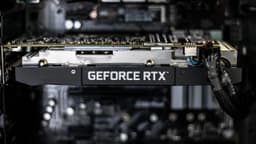How to List Tables in a Cassandra Keyspace
Have you ever wondered how to easily list all the tables within a keyspace in Cassandra? Managing tables within a keyspace is a fundamental task for any Cassandra database administrator or developer. Whether you are new to Cassandra or a seasoned pro, having a clear understanding of how to list tables can be incredibly helpful.
In Cassandra, a keyspace is a namespace or container for tables, somewhat like a schema in a traditional relational database. Within a keyspace, you can have multiple tables that store your data in various ways based on your application's requirements. When you're working with multiple tables in a keyspace, being able to quickly retrieve a list of all the tables becomes essential.
Here's a straightforward guide on how to list tables in a Cassandra keyspace:
Using cqlsh to List Tables
One convenient method to list tables in a Cassandra keyspace is by using cqlsh, the Cassandra Query Language Shell.
To get started, first, launch cqlsh by running the following command in your terminal:
Bash
Next, connect to your desired keyspace by using the following command:
Sql
Replace keyspace_name with the actual name of your keyspace. Once you've selected the keyspace you want to work with, you can now execute the following command to list all the tables within that keyspace:
Sql
This command will provide you with a list of all the tables present in the selected keyspace. You'll see the table names displayed in the output, making it easy for you to quickly identify and work with the tables in your Cassandra keyspace.
Querying System Schema Tables
Another approach to list tables in a Cassandra keyspace involves querying Cassandra's system schema tables directly.
Cassandra stores its schema information in system schema tables within the system keyspace. By querying these system tables, you can retrieve metadata about the keyspaces, tables, and columns present in your Cassandra cluster.
To fetch a list of tables in a specific keyspace, you can execute the following query:
Sql
Replace keyspace_name with the name of the keyspace you are interested in. When you run this query, it will return a list of table names associated with the specified keyspace.
Programmatic Approach Using Cassandra Drivers
If you prefer a programmatic approach to list tables in a Cassandra keyspace, you can leverage Cassandra drivers in your preferred programming language.
For example, if you are using Python and the DataStax Python driver for Cassandra, you can retrieve a list of tables in a keyspace by writing a simple script. Here's a basic Python script that achieves this:
Python
In this script, we establish a connection to the Cassandra cluster, select the desired keyspace, and then execute a CQL query to fetch the table names associated with that keyspace. Finally, we iterate over the results to print out the table names.
Listing tables in a Cassandra keyspace is a simple yet crucial task in database management and development. Whether you choose to use cqlsh, query system schema tables, or adopt a programmatic approach with Cassandra drivers, being able to access a comprehensive list of tables within a keyspace empowers you to navigate and interact with your data effectively.












